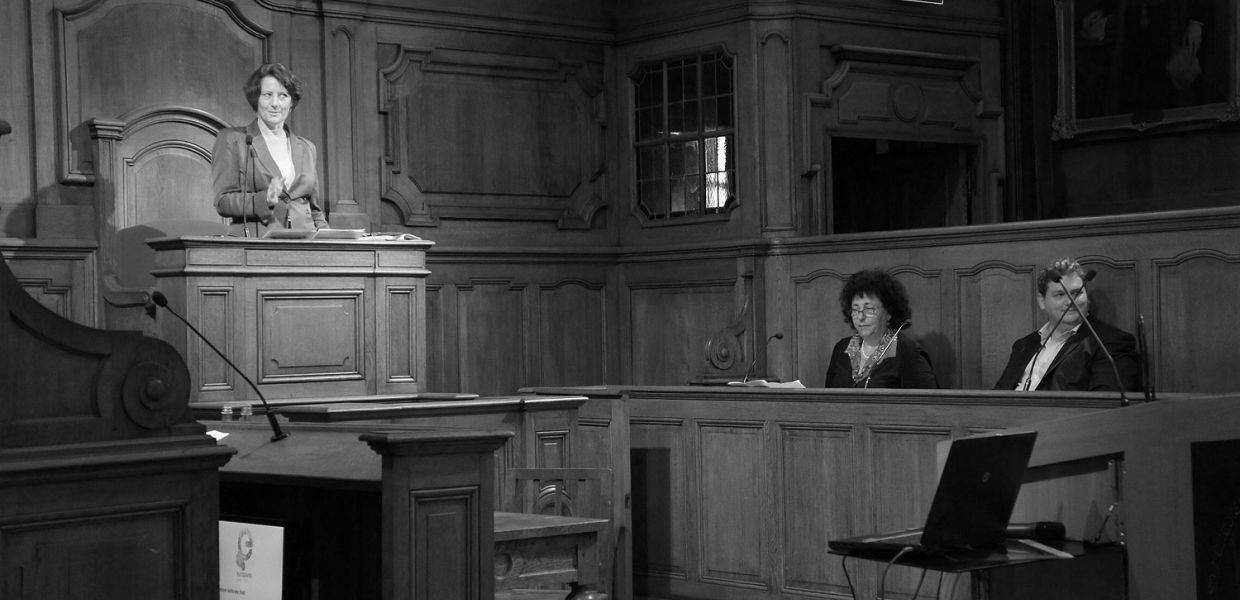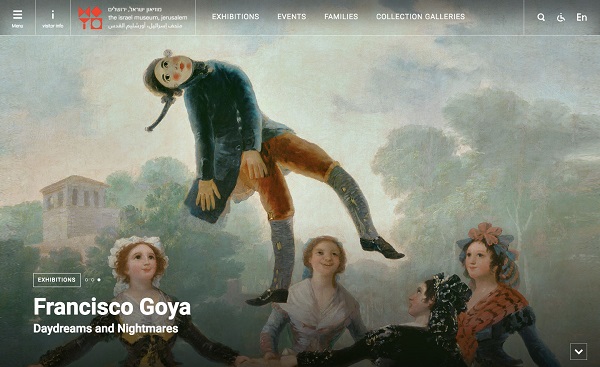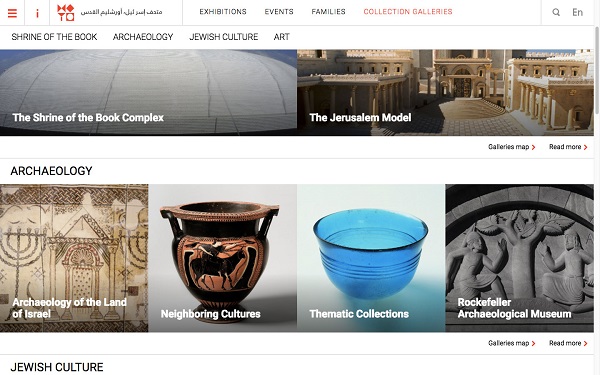Meet the Members Council: Susan Hazan

Many of you know me from the annual EVA/Minerva conferences on the digitisation of cultural heritage which Dov Winer and I have co-chaired since 2004. For those who have not yet joined us, we look forward to hosting you in Jerusalem on the second week of November for the years to come – save the date!
My own digital story starts even earlier than that. The Israel Museum was one of the first to go online back in 1996.Today, with more than 5 versions behind us, we are soon re-launching the new site that pulls into it over 1,200 online exhibitions, 220 exhibition mini sites, the daily calendar of events, and of course our online collections into a single, coherent platform. The site also includes a series of unique ventures, such as the wildly successful Digital Dead Sea Scrolls project, which received over one million unique users over the first 4 days following its launch.

Screenshot of the Israel Museum’s yet to be launched new home page
In the early days of the Europeana Network, the Israel Museum joined the Minerva, and Athena projects as an Associated Member, and we uploaded our encyclopedic collections into Europeana, including our comprehensive Fine Arts, Jewish Art and Life, and Archaeology collections; our extensive holdings of biblical and Holy Land archaeology. What has always impressed me about the Europeana professional network was how all the numerous national representatives speaking more than the 24 official European languages could come together to discuss, and resolve so many critical issues. I have sat on several working groups over the years, and have listened to some of the brightest minds in Europe thrash out proposals from their own practice to scale their experience towards the magnitude of a Pan-Europeana library. And most amazingly – it all worked! Clearly there is still plenty to do, and I am honored to be able to join the Members Council and look forward to be able to make a contribution in the months to come.

Screenshot of the of Israel Museum’s new collections page
My own activities in Europeana tended to be all about end users. After Hans van der Linden established the UGC Thematic Task Force, I took over the chair from Frans Hoving in 2011 to review the then current practices required to support content providers and aggregators define, create, moderate, and accommodate their user generated content. After much discussion between the group, Lars Wieneke (CVCE, Luxembourg) and I delivered our white paper, Report on the results of the UGC Thematic Task Force at the Europeana, 2012 Plenary in Leuven.
The Europeana community is always concerned with crucial issues, but our leaders also know how to deliver these discussions in persuasive ways. At the Europeana plenary, still in 2012 in Leuven, I was delighted to be cajoled into acting as an honourable member in the Cultural Commons Oxford style debate to argue – This House believes that: all content in the Europeana Cultural Commons should be freely available for re-use. To be honest, I don’t recall which side I was supposed to be supporting; the setting was stunning and the proceedings a lot of fun. I do remember, however, that it it was diametrically opposed to my principles, but hey, when you are facing the Hon. Member Gary Hall, from the Centre for Disruptive Media, no holds are barred. For those curious to remember this entertaining debate – there is a wonderful stream of juicy tweets archived online.
I have always been interested in combining practice with theory, and my academic research has focused on the impact of the mediated museum and the ways that museums are ‘performed’ in so many ways; online, over traditional media, as well as in the physical gallery. I contributed to the V-Must project, a Network of Excellence, funded by the European FP7 Network of Excellence that focused on Virtual Museums, and have written extensively on these subjects. I hope to be able to make some sort of contribution towards this as Council Member in the months to come.
Europe is currently undergoing massive upheavals: the potential of digital delivery of its cultural heritage is almost bewildering. There is no better way to understand who we are than by connecting to our histories, and to the structured narratives that move through electronic networks to open up new pathways for self-directed learning and creative ways of thinking about self; past and present.

